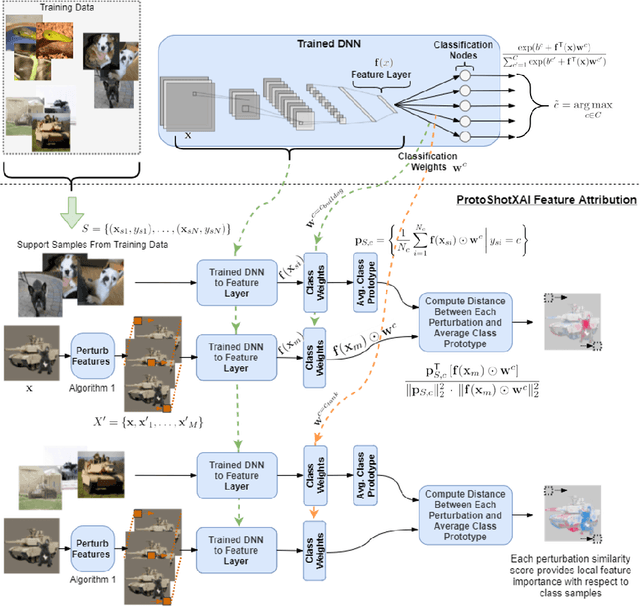Samuel Hess
A Maximum Log-Likelihood Method for Imbalanced Few-Shot Learning Tasks
Dec 07, 2022Abstract:Few-shot learning is a rapidly evolving area of research in machine learning where the goal is to classify unlabeled data with only one or "a few" labeled exemplary samples. Neural networks are typically trained to minimize a distance metric between labeled exemplary samples and a query set. Early few-shot approaches use an episodic training process to sub-sample the training data into few-shot batches. This training process matches the sub-sampling done on evaluation. Recently, conventional supervised training coupled with a cosine distance has achieved superior performance for few-shot. Despite the diversity of few-shot approaches over the past decade, most methods still rely on the cosine or Euclidean distance layer between the latent features of the trained network. In this work, we investigate the distributions of trained few-shot features and demonstrate that they can be roughly approximated as exponential distributions. Under this assumption of an exponential distribution, we propose a new maximum log-likelihood metric for few-shot architectures. We demonstrate that the proposed metric achieves superior performance accuracy w.r.t. conventional similarity metrics (e.g., cosine, Euclidean, etc.), and achieve state-of-the-art inductive few-shot performance. Further, additional gains can be achieved by carefully combining multiple metrics and neither of our methods require post-processing feature transformations, which are common to many algorithms. Finally, we demonstrate a novel iterative algorithm designed around our maximum log-likelihood approach that achieves state-of-the-art transductive few-shot performance when the evaluation data is imbalanced. We have made our code publicly available at https://github.com/samuelhess/MLL_FSL/.
ProtoShotXAI: Using Prototypical Few-Shot Architecture for Explainable AI
Oct 22, 2021



Abstract:Unexplainable black-box models create scenarios where anomalies cause deleterious responses, thus creating unacceptable risks. These risks have motivated the field of eXplainable Artificial Intelligence (XAI) to improve trust by evaluating local interpretability in black-box neural networks. Unfortunately, the ground truth is unavailable for the model's decision, so evaluation is limited to qualitative assessment. Further, interpretability may lead to inaccurate conclusions about the model or a false sense of trust. We propose to improve XAI from the vantage point of the user's trust by exploring a black-box model's latent feature space. We present an approach, ProtoShotXAI, that uses a Prototypical few-shot network to explore the contrastive manifold between nonlinear features of different classes. A user explores the manifold by perturbing the input features of a query sample and recording the response for a subset of exemplars from any class. Our approach is the first locally interpretable XAI model that can be extended to, and demonstrated on, few-shot networks. We compare ProtoShotXAI to the state-of-the-art XAI approaches on MNIST, Omniglot, and ImageNet to demonstrate, both quantitatively and qualitatively, that ProtoShotXAI provides more flexibility for model exploration. Finally, ProtoShotXAI also demonstrates novel explainabilty and detectabilty on adversarial samples.
 Add to Chrome
Add to Chrome Add to Firefox
Add to Firefox Add to Edge
Add to Edge